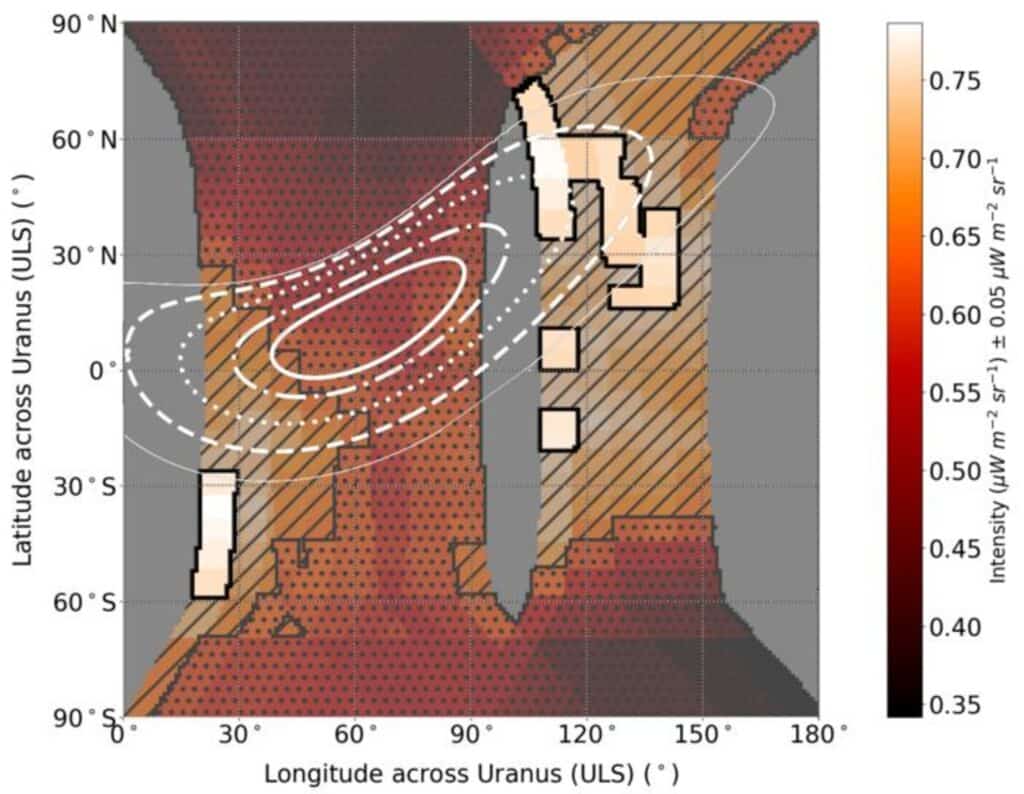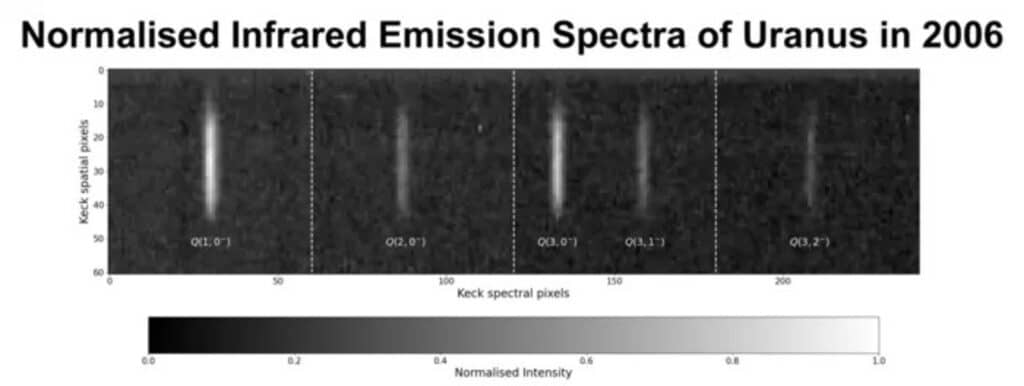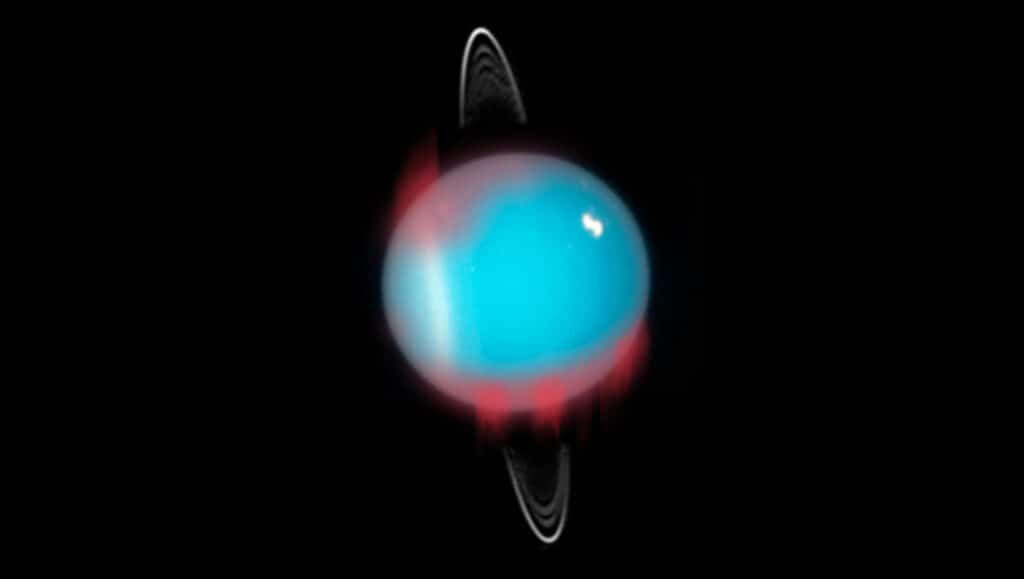Astronomers recently found the presence of an infrared aurora on the distant and frigid planet Uranus. This revelation not only offers new insights into the enigmatic magnetic fields of outer planets in our solar system but also holds the potential to inform our understanding of habitability in distant worlds.
The study marks the first time that measurements of the infrared (IR) aurora on Uranus have been obtained since investigations commenced in 1992. While scientists had observed the ultraviolet (UV) aurorae of Uranus since 1986, the existence of IR auroras had remained unconfirmed until now.
Uranus and Neptune, often referred to as ice giants, stand out in our solar system due to the misalignment of their magnetic fields with their rotational axes. Although the reasons behind this anomaly remain elusive, the newly discovered IR aurora on Uranus could hold vital clues.
Auroras are produced by highly energetic charged particles that travel down a planet’s magnetic field lines and collide with its atmosphere. On Earth, these phenomena manifest as the dazzling Northern and Southern Lights. However, on planets like Uranus, where the atmosphere primarily consists of hydrogen and helium, the auroras emit light in wavelengths beyond the visible spectrum, such as infrared (IR).

To confirm the existence of the IR aurora on Uranus, scientists used measurements taken by analyzing specific wavelengths of light emitted by the planet, using the Keck II telescope. These wavelengths, similar to a barcode, can reveal details about the planet’s atmosphere, such as temperature and density. In the infrared spectrum, emission lines from a charged particle known as H3+ vary in brightness based on factors like temperature and atmospheric density, serving as a sort of thermometer for the planet.
The team’s observations unveiled distinct increases in H3+ density in Uranus’s atmosphere, with minimal temperature changes, consistent with ionization caused by the presence of an IR aurora. This not only advances our understanding of the magnetic fields of outer planets in our solar system but also holds implications for identifying potentially habitable exoplanets.
“The temperature of all the gas giant planets, including Uranus, are hundreds of degrees Kelvin/Celsius above what models predict if only warmed by the sun, leaving us with the big question of how these planets are so much hotter than expected? One theory suggests the energetic aurora is the cause of this, which generates and pushes heat from the aurora down towards the magnetic equator,” says study lead author Emma Thomas, a PhD student in the University of Leicester School of Physics and Astronomy, in a university release.
Thomas also highlighted how this research could impact our understanding of exoplanets:
“A majority of exoplanets discovered so far fall in the sub-Neptune category, and hence are physically similar to Neptune and Uranus in size,” notes Thomas. “This may also mean similar magnetic and atmospheric characteristics too. By analyzing Uranus’s aurora which directly connects to both the planet’s magnetic field and atmosphere, we can make predictions about the atmospheres and magnetic fields of these worlds and hence their suitability for life.”

Additionally, the study may shed light on a rare phenomenon on Earth known as geomagnetic reversal, where the north and south magnetic poles switch hemisphere locations.
“We don’t have many studies on this phenomena and hence do not know what effects this will have on systems that rely on Earth’s magnetic field such as satellites, communications and navigation. However, this process occurs every day at Uranus due to the unique misalignment of the rotational and magnetic axes,” explains Thomas. “Continued study of Uranus’s aurora will provide data on what we can expect when Earth exhibits a future pole reversal and what that will mean for its magnetic field.”
The study is published in the journal Nature Astronomy.












